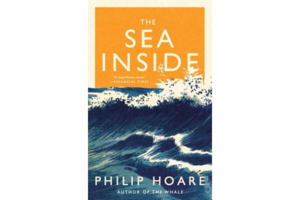10 excellent books you might have missed in 2014
Which 2014 books were so good that a critic would gladly read them again on his own time? Danny Heitman shares his list.

'The Sea Inside' by Philip Hoare tops the list of 2014 books that book critic Danny Heitman would like to re-read.
As someone who makes part of his living as a book reviewer, I’m among those lucky few bibliophiles who get paid to read. It’s a mostly nice gig that isn’t, nevertheless, always what it’s cracked up to be.
There’s that sinking feeling, for example, that can come over me about 30 pages into an assignment, when I realize that the title across my lap is a real dud. While the leisure reader can cut his losses and pick another book from the shelf, professional obligation requires me to soldier on, slogging through prose I’d rather avoid altogether.
Such disappointments make the good books that land on a reviewer’s desk seem all the more welcome.
Here are 10 books from 2014 that, given the chance, I’d read again because I want to, not because I have to. The numbering here is merely for convenience, and suggests no ranking from good to great. You’ll notice that my list features nonfiction and stresses science and nature writing, which simply reflects the kinds of books I tend to review. Your list of good books from 2014 would no doubt be different, and making such a list can be a pleasure in itself – a chance to revisit reading that gave us joy in the past 12 months, and set the stage for more good books in the coming year.
1) “The Sea Inside,” by Philip Hoare (Melville Press, 374 pp., $27.99)
I wasn’t familiar with Philip Hoare’s work until I read this lapidary work on how the ocean has shaped human experience, but I was hooked from the first page, and couldn’t wait to read his earlier book, “The Whale.” Every one of his sentences shimmers with acute perception, in the tradition of Annie Dillard’s “Pilgrim at Tinker Creek.” This is reading as revelation.
2) “The Human Age: The World Shaped by Us,” by Diane Ackerman (Norton, 352 pp., $27.95) Ackerman’s background as a poet deeply informs this contemplation of humanity’s power to alter ecology. She strikes a largely hopeful note, in spite of the globe’s environmental challenges, and her lyrical sensibility evokes the spirit of her earlier masterpiece, “A Natural History of the Senses.” Writing this consistently good is easy to take for granted.
3) “Essays After Eighty,” by Donald Hall (Houghton Mifflin, 144 pp., $22) Hall, a former US poet laureate, no longer writes poetry, but these prose reflections about what it’s like to be old are really poetry of a sort – the sentences compact as verse, with clever surprises at every turn. At 86, Hall shows that age is no obstacle to writing well.
4) “Flirting with French,” by William Alexander (Algonquin, 226 pp., $23.95) If you like Bill Bryson’s wryly self-deprecating books, you’ll love Alexander’s comic account of trying to learn French in middle age. A great introduction to Alexander’s style for newcomers, and a welcome reconnection for his veteran fans.
5) “The Thing With Feathers,” by Noah Strycker (Riverhead, 288 pp., $27.95) Strycker, a young naturalist, surveys the mysteries of bird life but reveals, perhaps inadvertently, that the oddest bird is himself. He’s a charming eccentric – David Attenborough for the next generation.
6) “The Wheeling Year,” by Ted Kooser (University of Nebraska Press, 83 pp., $14.95) Kooser, a former US poet laureate, assembles selections from his notebook and arranges them by month, creating an almanac of observations from January through December. Although the leavings of a notebook might seem like an afterthought as a literary project, this is a bright little masterpiece, alive with music, color and movement. These are sentences that dance on the page.
7) “The End of Absence,” by Michael Harris (Current, 243 pp., $26.95) Harris writes thoughtfully about the possibility that in an intensely interconnected world, we no longer have the empty space required for sustained reflection. If Thoreau had lived in the Internet age, he might have written this book.
8) “Blue Horses,” by Mary Oliver (Penguin, 96 pp., $24.95) Oliver, a longtime New Englander now relocated to Florida, finds new territory to explore in these luminous poems about the natural world. A Transcendentalist in the Emersonian tradition, she reads her landscapes like Braille. Her poems so textured that they engage the fingertips as much as the eyes.
9) “The Art of Stillness,” by Pico Iyer (TED Books, 96 pp., $14.99) This tiny book, based on Iyer’s TED talk about the need for solitary reflection, can be read in one sitting, but its theme lingers long afterward – a faint but persistent summons to slow down, get one’s bearings, and reenter the daily world refreshed.
10) “You’re Not Lost if You Can Still See the Truck,” by Bill Heavey (Grove Atlantic, 304 pp., $25.) I’m not the most likely fan of Heavey’s humorous columns for Field and Stream, but a reader doesn’t have to hunt or fish to appreciate Heavey’s gift for storytelling. What’s more, some of the essays in this new collection are only tangentially about fish and game, but concern themselves primarily with the complicated challenges of marriage and fatherhood. The best essays, here, in fact, are heartbreakingly tender, without a single joke. This is a hard book to classify, and that’s its biggest strength.

